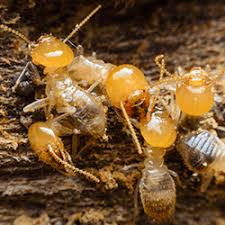Unknown Facts About Termite Control In Agriculture
Soil around sewer pipes and conduits and all other structural members in contact with the soil must also be handled. The insecticide should be mixed with water as needed on the pesticide label and applied at the rate of 4 gallons per 10 linear feet, per foot of depth. It's possible to trench around the outside of a slab once it has been poured, but this alone usually will not offer satisfactory termite control because the termite colony might be entering the structure from the soil under the slab.
In addition, concrete slabs usually have many different points of entry including bath traps, plumping sockets, etc.. Slab construction requires a great deal of time and labour when treating for termites. Slab construction often will call for precise drilling to block most of termite entry points. Slabs have to be drilled vertically along all cracks and construction joints at 12-inch intervals and no more than 6 inches in the foundation.
This method of drilling and treating can also be employed for dirt-filled porches and stress cracks occasionally found in slabs.Wood treatmentThis form of treatment involves applications of termiticides right to timber to eliminate existing termite infestations or to make the wood resistant to termites. There are several supplemental ways in which wood treatments can be employed in the pest control industry.Pressure-treated wood is frequently used in the construction of buildings and provides effective termite control if it is used for wood construction, at least to the ceiling level of the floor.
See This Report about Termite Control Home Treatment
In wood that was damaged, termiticide can be injected into the cavities. This will provide much better control than will a spray or brush application. Foundation treatment Foundation treatments involve the application of termiticides to foundation elements. The target of this treatment is to create a barrier by placing termiticides inside of concrete block/multiple brick walls where voids exist.

Termiticide baits control termites by eliminating or reducing the size of the colony. They do not make a barrier around the structure, as do the liquid insecticides discussed earlier. Presently, termiticide baits are insect growth regulators (IGRs) or slow acting poisons. The usage of termiticide baits can significantly decrease or eliminate the need for a conventional liquid insecticide.There are two strategies for the usage of termiticide baits.
When termites are detected in the monitoring apparatus, the untreated cellulose substance Termite Control Home Treatment is replaced with a treated substance, referred to as a"termiticide bait". The lure material is replenished as long as termites continue feeding. For the lure system to be effective, the number of stations must be installed and the stations have to be inspected or monitored frequently as indicated on the product label.
Things about Termite Control How Often
As a variation of the strategy, apparatus may be pre-baited and placed in the soil in areas where termites are present. The second bait strategy currently in use involves the attachment of bait devices directly to the surface of construction elements where termites are feeding. These devices are pre-baited and are attached to the foundation walls, floor joists, sub-floor and other similar locations.
There are advantages and disadvantages to the use of termiticide baits. Baits may be used to treat structures that cannot be treated due to the presence of a well, inaccessibility of infested regions or concerns about using pesticides. But, in most cases, termiticide baits do not provide quick control of the infestation.
The North Carolina Official Waiver of Minimum Requirements for the Control of Subterranean Termites in Existing Structures is a standard form prescribed by the NC Structural Pest Control Committee. This form enables the licensee to deviate from or omit one or more of their minimum subterranean treatment requirements. By way of instance, a waiver may be click to read necessary since the working clearance in the crawlspace is inadequate in order for it to be treated correctly, or a treatment requires indoor drilling that may not be desirable.
All About Termite Control How Often
Any part of the treatment that is waived must be explained on the standard waiver form. The waiver form is not necessary for termite baits/monitoring systems so long as the pest control company provides a service agreement and/or warranty for the entire structure treated. Conclusion Remember the way for the control of subterranean termites is prevention.